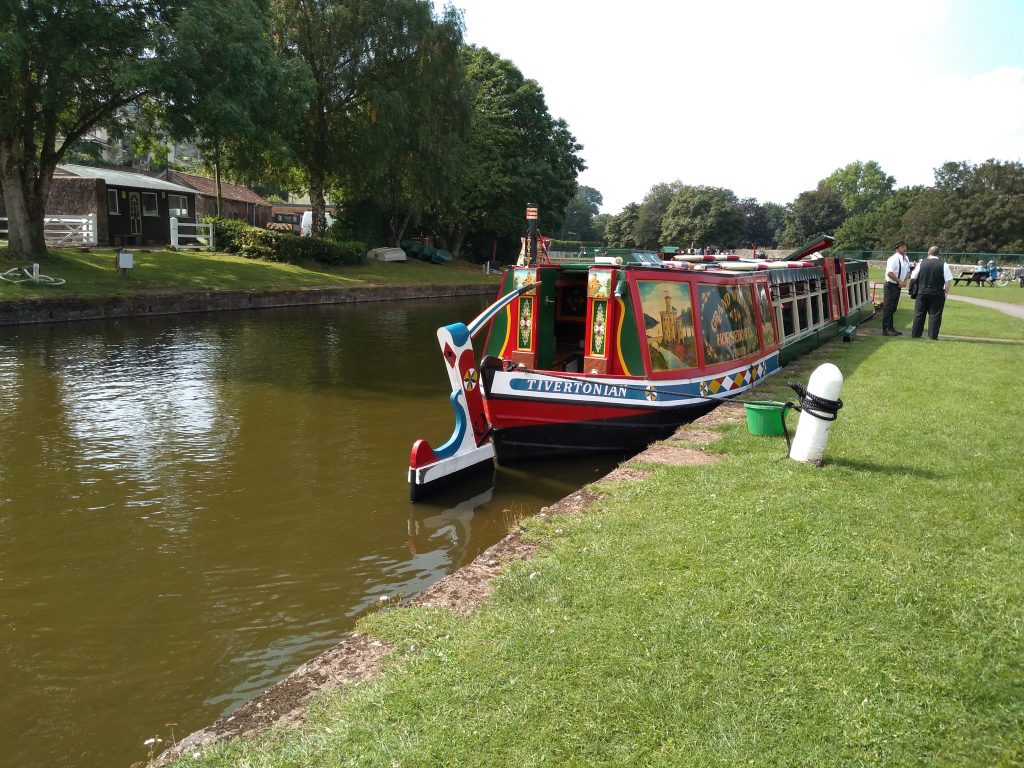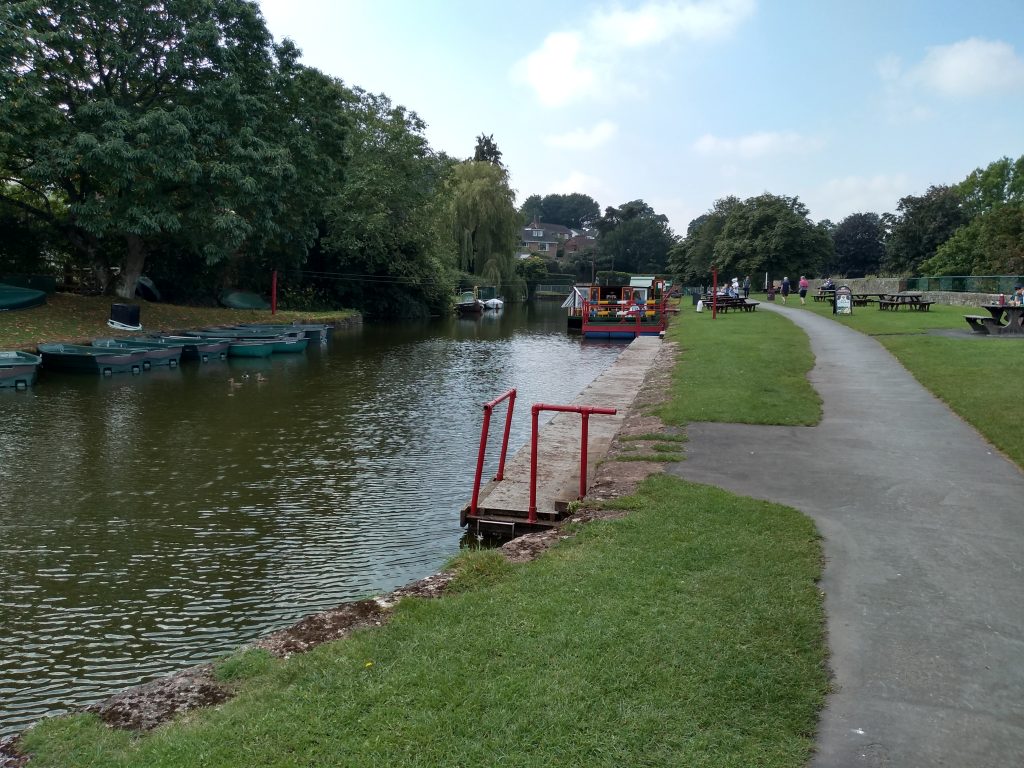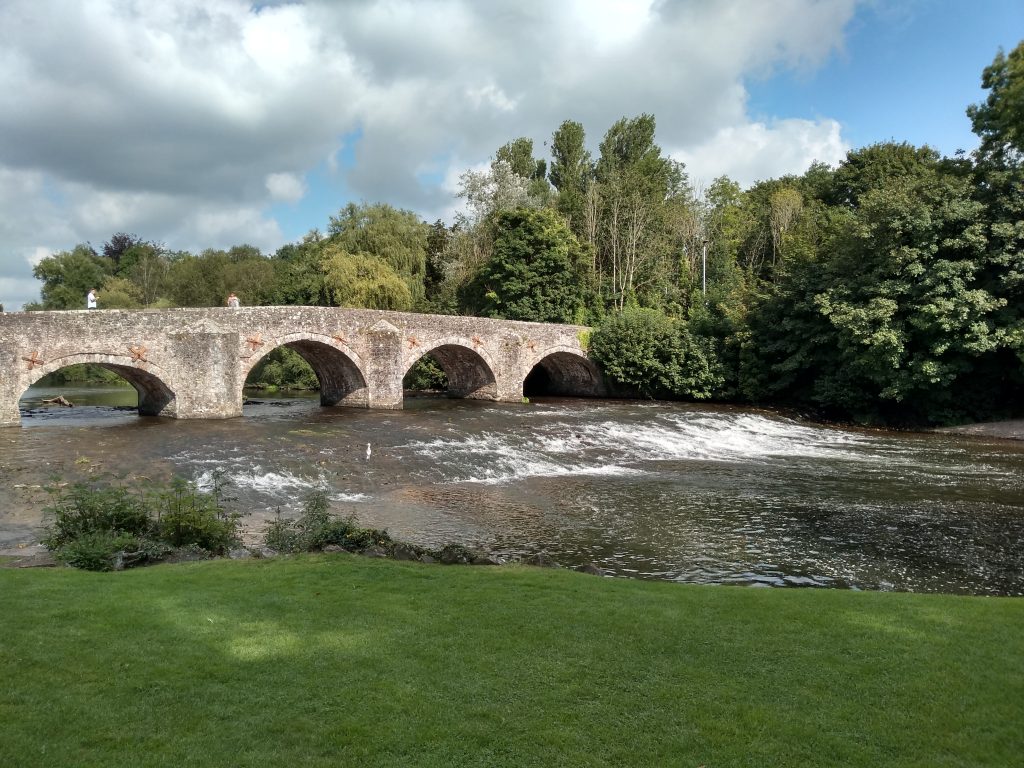During the summer, I enjoyed a trip on a 75-seater, horse-drawn barge on the Tiverton Canal, and it was such a lovely experience I thought it was worth sharing in a blog. We booked in advance to avoid disappointment but did not need to pay until we arrived to collect our tickets. In these days of uncertainty with Covid, I thought this was good practice.
There was a choice of trips with one being an hour and a half duration and the other a bit longer. I thought the shorter one would be best as I have found with boat trips in the past, the seats can become uncomfortable after a while. However, I would have been happy to stay on board for longer.
The boat was beautifully clean and well maintained, and the staff were knowledgeable and welcoming and entertained us with interesting anecdotes. There were limited snacks and drinks available on board and I can recommend the hot chocolate! Luckily for us, the day of our trip was warm and sunny and thoroughly enjoyable and relaxing. If you want to escape the rat race for a while, this is the place to go. During the trip, the passengers are told a bit about the Tiverton Canal, and as I love history, I found this interesting.


In the olden days of sail, many ships were lost navigating between the Bristol Channel and English Channel, particularly around Lands End, and a plan was formed to join the two channels by an inland waterway. The oldest canal in the country is the Exeter Canal which was built in 1566 and was the first canal to be built since Roman times. The intention was to join the Exeter Canal with the Bridgwater and Taunton Canal.
Work commenced on the Lowdells to Tiverton section of the Grand Western Canal in 1810 and was completed in 1814. This was an incredible achievement when you consider that the canal is between two and four feet deep, at least twenty feet wide, and the only tools the men would have used were a pick, shovel, and wheelbarrow. The Tiverton Canal is eleven miles long, with no locks or lifts necessary, and is fed by a number of freshwater springs. The cost of building it was £244,500, no doubt a great deal of money at the time. The Canal was profitable, mainly carrying limestone in tub boats from the quarries to the kilns at Tiverton. The stone was fired in the kilns to produce lime for farming and house building. The canal ceased to be used for these purposes in 1924.
Today the horse-drawn barge on the Tiverton Canal is pulled by a beautiful Shire Horse. However, in the past, it was much more likely for a mule or a donkey to be used. At a steady walking pace, a horse can move approximately 40 times as much weight in a barge as it can with a cart. On the water, the load moves with little friction, and it was this efficiency that inspired the development of the canal system throughout the country.
This was the first time I had travelled on a barge, but we frequently walk along the towpath and have walked the whole eleven miles, though not all at once. There are one or two bridges that cross the canal and until this trip, I had never noticed that some of the stones used to build them have marks carved into them. As few of the working class would have been able to read and write in the early 1800s, this was how the labourers marked the stones they had hewn to ensure they were paid for their hard work.
A feature of the trip that I particularly enjoyed was a two-minute silence when the peace and tranquillity of travelling by a horse-drawn barge could be fully appreciated. The canal is now a designated country park and home to a wide range of wildlife. Waterfowl are found along most stretches and also moorhens, Mute swans, mallards and otters. A few lucky people may spot a kingfisher, though I have never seen one yet. Perhaps next time!

We finished off our day with lunch at The Fisherman’s Cot in Bickleigh. This inn is set in beautiful surroundings right next to the River Exe. I have heard this is the bridge that inspired Paul Simon to write the song “Bridge over Troubled Waters”, but I don’t know if that is true. If you look carefully you can just see a heron near the centre of the bridge.
0 Comments